Pope Francis has announced that he is gifting to Greece three fragments from the Parthenon Sculptures that have been held in the Vatican for over 200 years and since 1937 in the Museo Gregoriano Profano. A possible seismic shift in the campaign for the eventual reunification of the Elgin Collection in the British Museum may just have occurred.
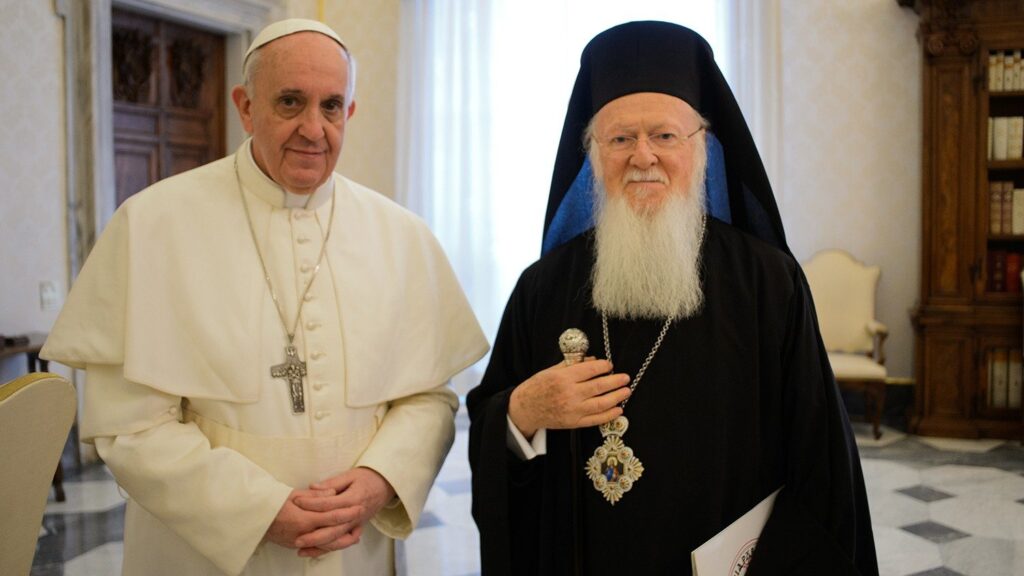
The announcement issued by the Vatican and welcomed by the Greek Ministry of Culture stated that following a request by the Ecumenical Patriarch Bartholomew of the Greek Orthodox Church Pope Francis has decided to return the fragments from the Parthenon Sculptures through the ecclesiastical authority of Greece represented by the Archbishop Ieronymos II, Archbishop of Athens and All Greece.
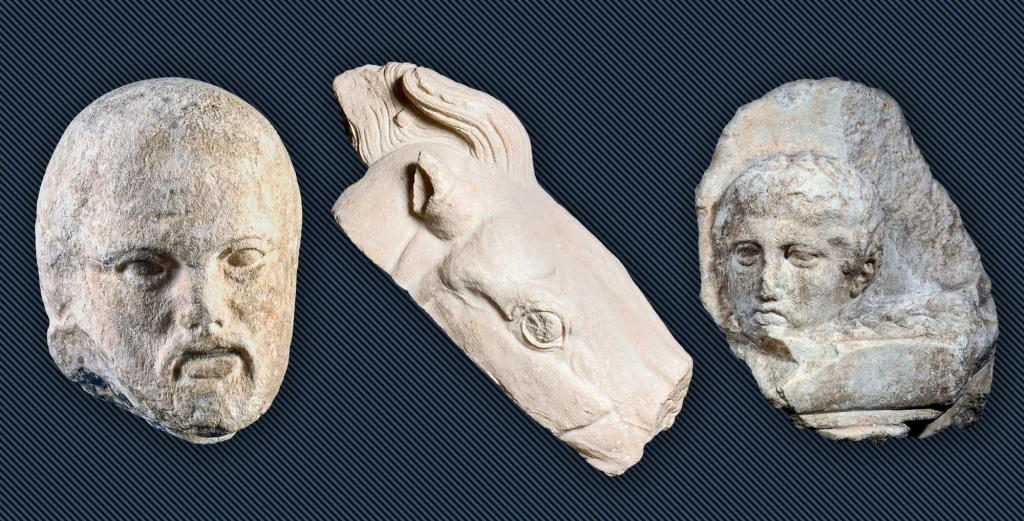
The three fragments are originally from three different sections of the Parthenon - the west pediment, the north frieze and a south metope - and were likely to have been detached when the Venetian general Morosini ordered the bombardment of the Ottoman-occupied Acropolis fortifications in 1687.Their return is highly significant.
According to Professor Nikolaos Stampolidis, the General Director of the Acropolis Museum, the announcement was the culmination of verbal and written agreements reached between the Greek Ministry of Culture and the Acropolis Museum with the Holy See and the Vatican Museum and is especially important coming so soon after the reunification of the Fagan fragment in the eastern frieze of the Parthenon.
The Bearded Man

The head of the bearded man belongs to the standing figure carved on the right of South Metope XVI which is part of the sculptural ornament of the building depicting the battle between the Lapiths and Centaurs, mythological creatures with the upper body of a human and the lower body and legs of a horse. A battle between order and chaos.
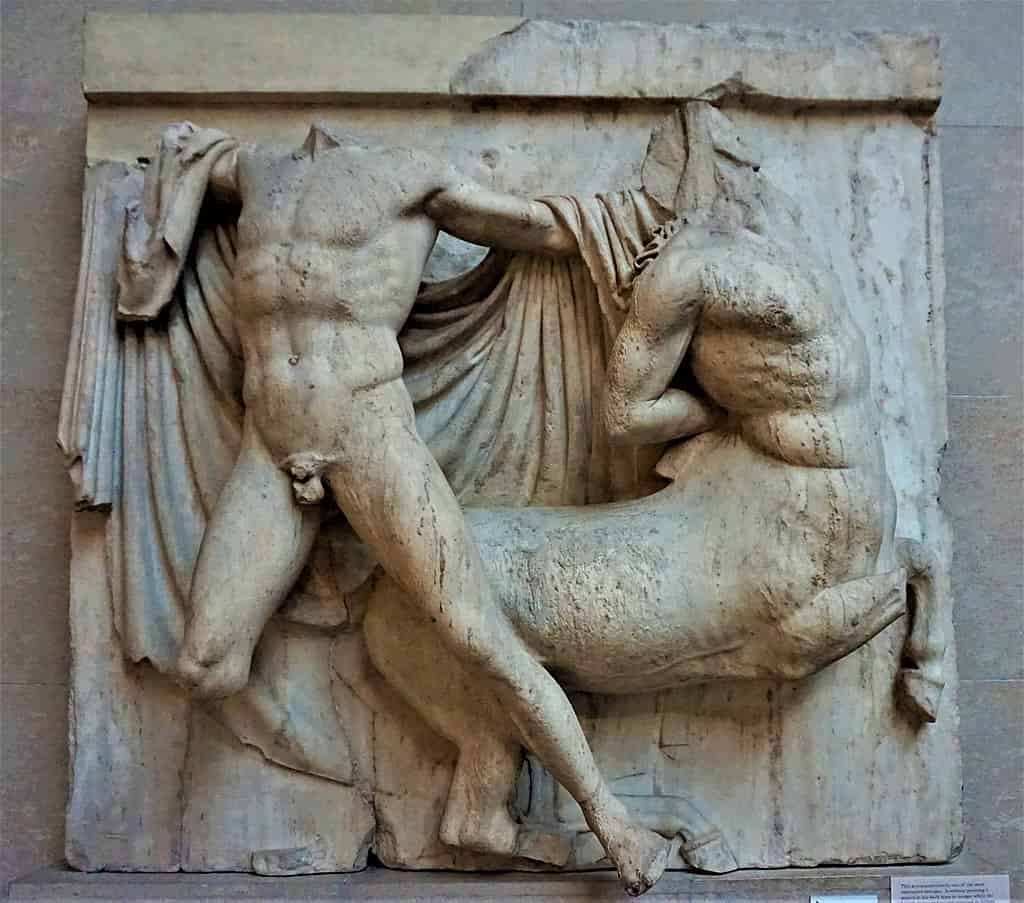
This legendary Centauromachy was the main feature of the metopes that graced the southern side of the temple and depicted half-human creatures who, while attending the wedding feast of King Peirithoos, a close friend of Theseus, became drunk and attempted to seize and carry off the Lapith women.
The disastrous Venetian military assault on the Parthenon in 1687 resulted in a number of metopes being broken into fragments and falling to the ground. In 1802 Lord Elgin’s men started the systematic dismantling of many of the surviving metopes as well as other sculptural elements from the Parthenon and also collected broken pieces along the way.
Whilst the Elgin collection represents the largest part of the looted sculptures, fragments were collected by opportunists and some eventually made their way to museums abroad. The fate of the surviving fragments from South Metope XVI bears graphic testimony to this.

We know from the drawings attributed to the French painter Jacques Carrey, who visited Athens in 1674, just thirteen years before the bombardment by Morosini, that the metope depicted agitated figures who were probably startled by the onslaught of the centaurs.

An older man tackles a youth who appears to be in agony. The young man’s original head and torso were donated to the British Museum by William Cavendish, the 6th Duke of Devonshire, in 1854 and are presently displayed in a dim cabinet in one of the vestibules off the Duveen Gallery.
The older man’s head made its way to the Vatican Museum in Rome. The knee and lower part of the torso are held in the Acropolis Museum.
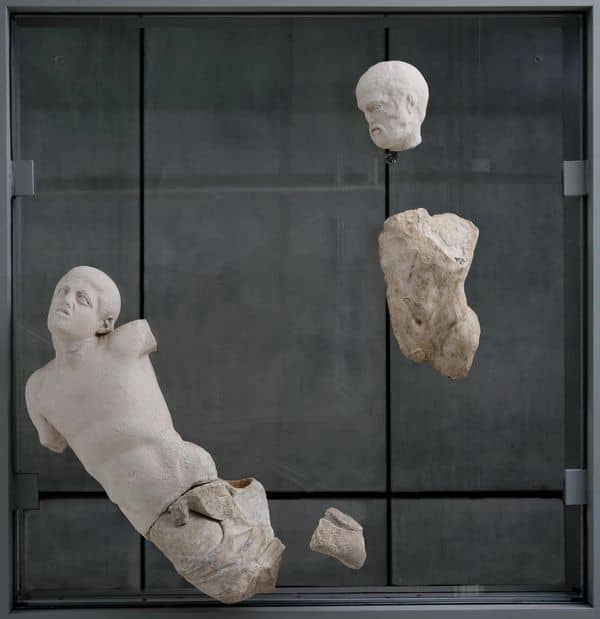
The South Metope XVI has been reassembled in the Acropolis Museum with plaster casts of the older man’s head from the Vatican Museums and the young man’s head and torso, now in the British Museum.
With the move by the Vatican, the reunification of the known surviving decorative elements of this exquisite metope relief is closer.
Athena’s horse
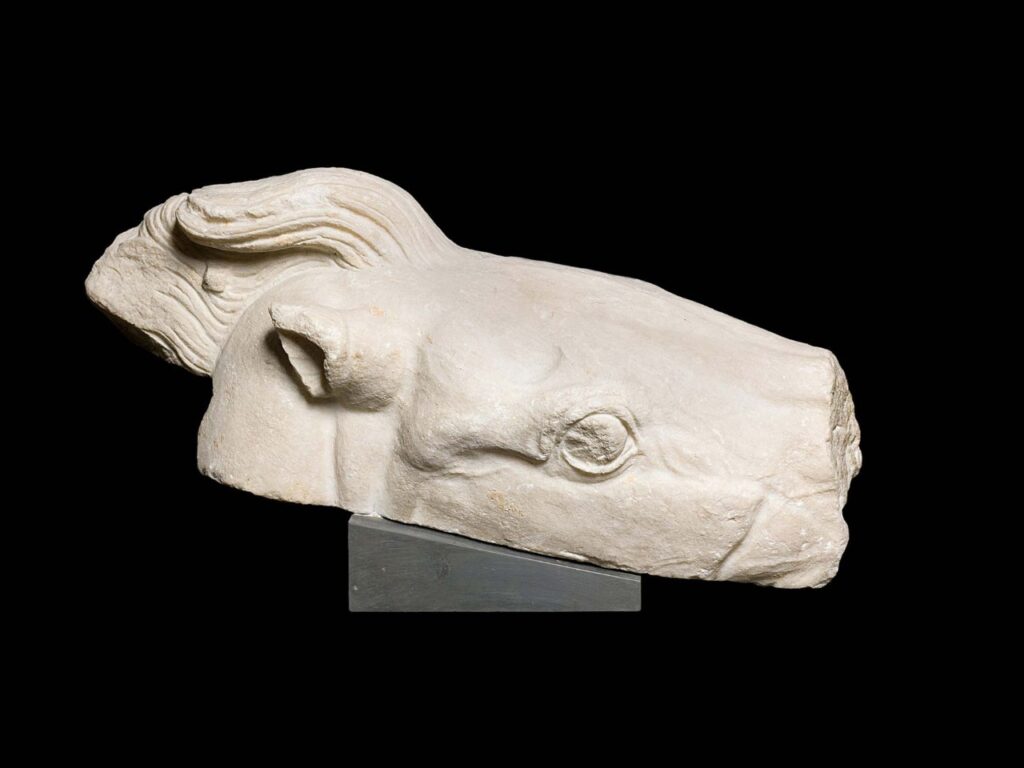
The horse's head is attributed to the West Pediment of the Parthenon depicting the conflict between the two main protagonists, Athena and Poseidon, as to which deity would exercise dominion over Attica. The fragment was discovered and identified by the Vatican archaeologist, Hermine Speier, in 1937 as being from a horse pulling the goddess Athena’s quadriga or chariot.
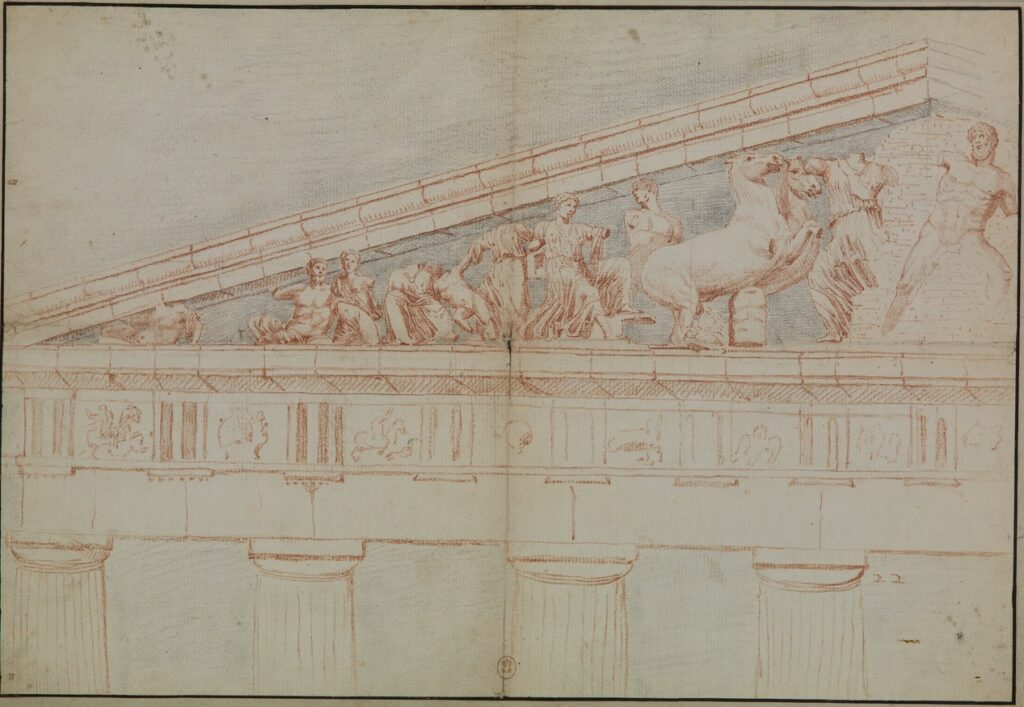
Again, we have Carrey to thank for drawing the pediments of the Parthenon before the explosion as well as the recreations of the pediment in the Nashville Parthenon in Tennessee to imagine this noble horse.
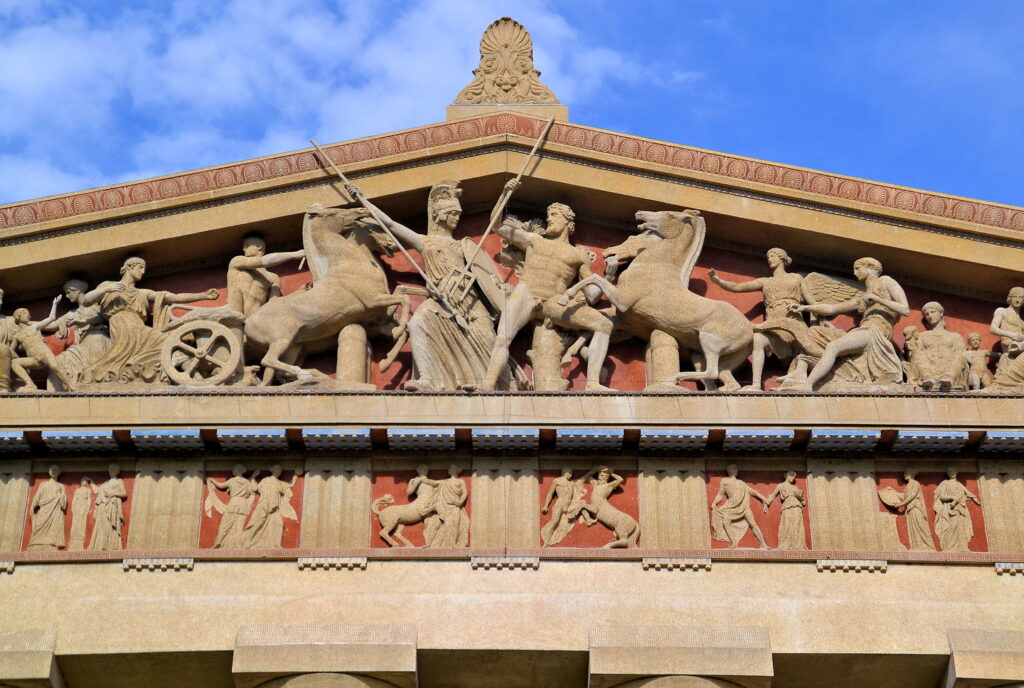
The figures on the pediment are all about the rise of Athena and control of the city, a theme which is central to the understanding of the Parthenon monument and its ornate sculptural decoration. The pediments manifest themselves to the viewer at once, as the classicist Robin Osborne has written, and only the view of the whole can be satisfactory.
The return of Athena’s horse is therefore more than symbolic.
The young tray bearer
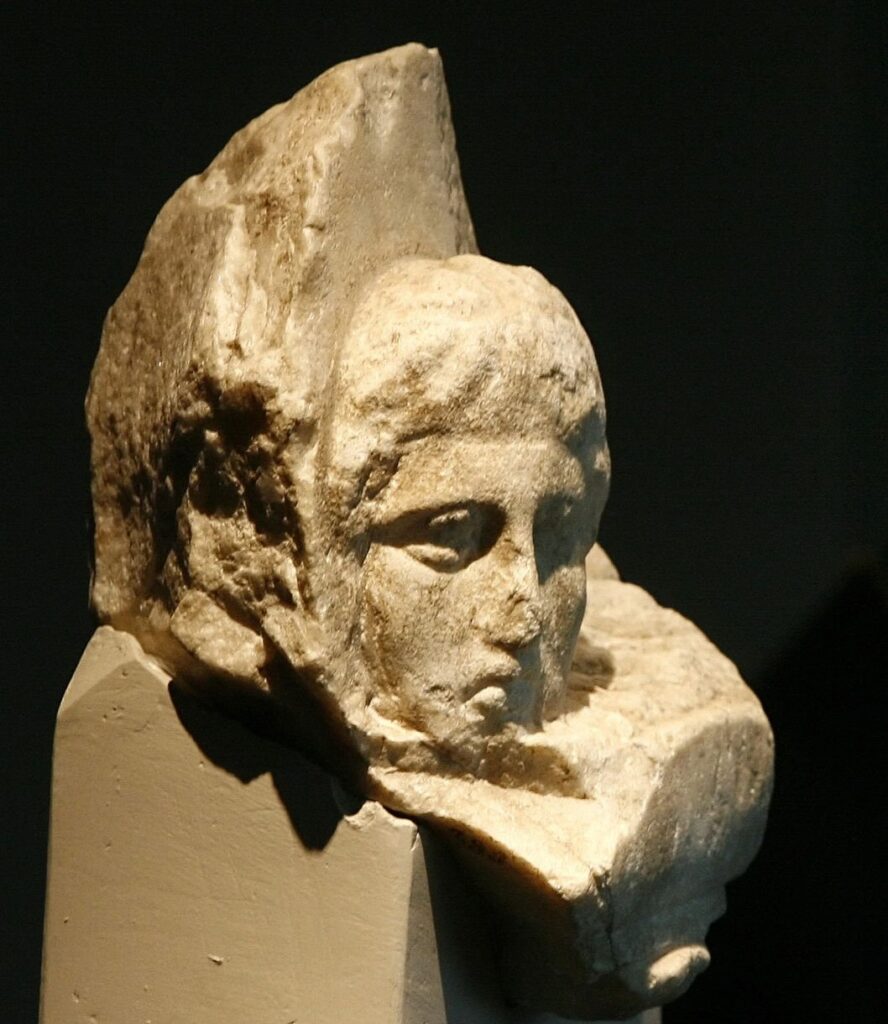
The relief with the head of a boy has been identified as one of the figures from the Parthenon frieze, carrying oblong-shaped trays of votive offerings, possibly fruits or sweets, during the Panathenaic procession in honour of the goddess Athena. It is part of Slab V of the North Frieze and although it was substantially destroyed in the Morosini explosion we know from the drawings by Carrey that it was part of a group of three figures in the procession (as depicted below and as imagined by the former curator at the British Museum, Ian Jenkins)

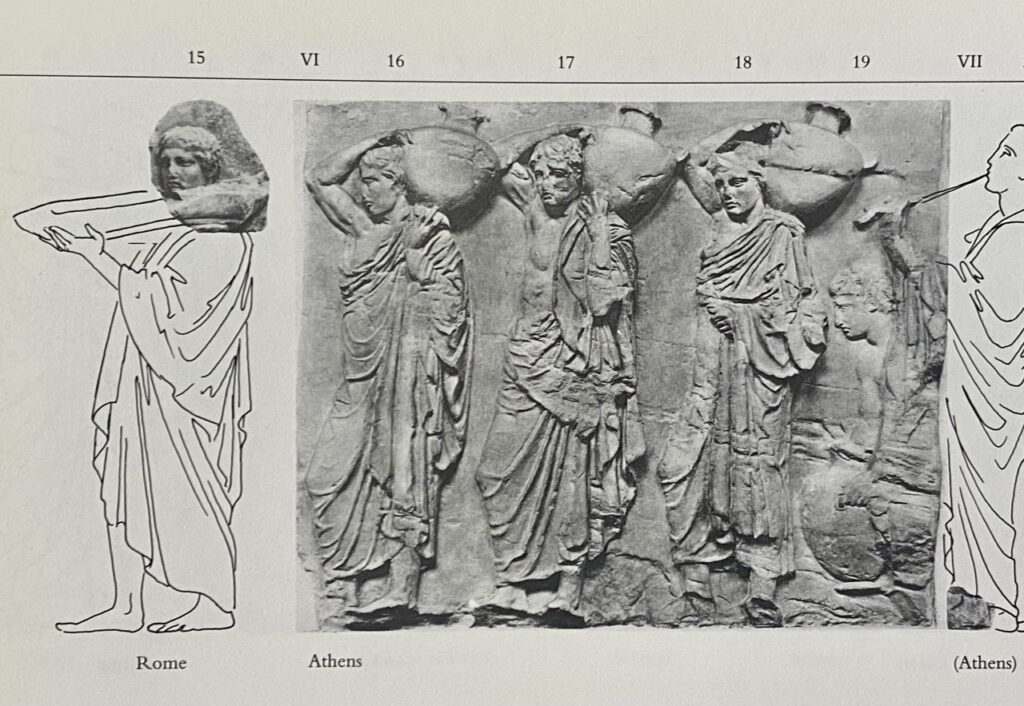
The 2008 return

This is not the first time that this particular sculpture has come home.
In November 2008, after a request from the late Greek Orthodox Archbishop Christopoulos to Pope Benedict XVI, the marble artefact was sent to Athens on a one year loan and was installed in the New Acropolis Museum (ahead of its official opening). The then Greek Culture Minister, Michalis Liapis, applauded the gesture from what he called “one of the most important museums in Europe” and declared:
“It should be seen as an example for other museums to follow to return the Parthenon Marbles.”
At the time, Dr Giandomenico Spinola, the head of the Department of Archaeology of the Vatican Museums, said that the loan of the sculpture might be renewed and also mentioned the prospect of the other two fragments also going on loan. Rather prophetically, he added:
"The pieces are the property of the Pope, and it is his decision."
Well, Pope Francis has now made that decision.
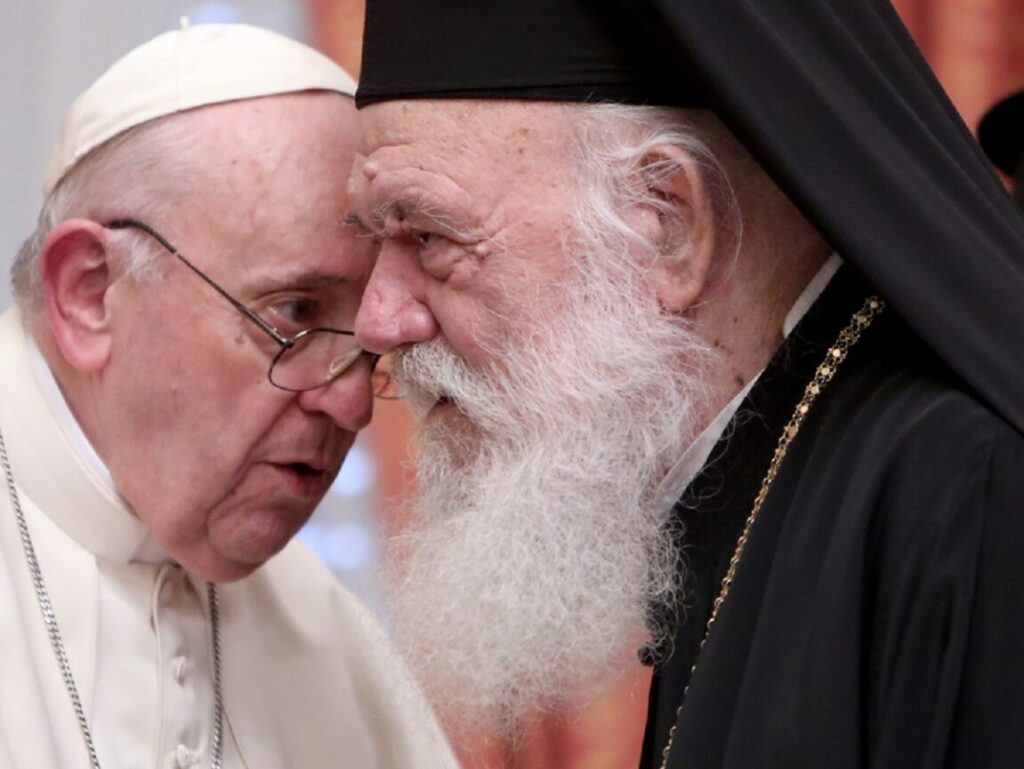
Pope Francis with Archbishop Ieronymos II (Vatican)
The reaction of the British Museum
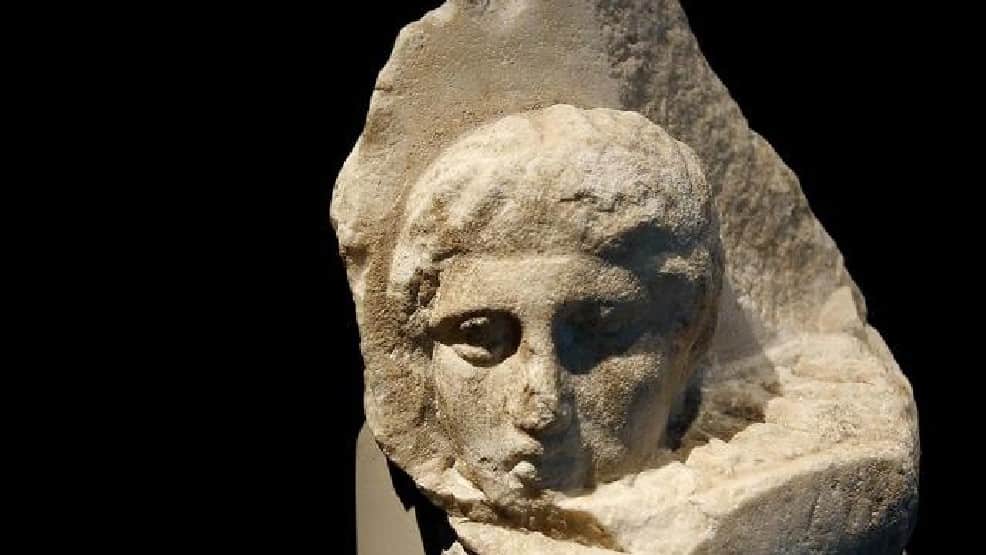
Ironically, back in 2008 the British Museum defiantly declared that its position on the Elgin Marbles was unchanged by the return of the youth's head, claiming that the action by the Vatican did not increase pressure on the British Museum because, according to its then Head of Press and Marketing, Hannah Boulton, it was “just a loan”.
That original ‘loan’ has morphed into the unconditional transfer of three Parthenon sculptural fragments from one of the world’s most important galleries, following hard on the heels of the agreement reached with Sicilian authorities for the perpetual deposit of the so-called Palermo fragment in the Acropolis Museum.

If you go to the British Museum website and read its list of excuses for the continued retention of the Parthenon Sculptures one of the questions posed is where else can they be seen?
In a rhetorical flourish, the British Museum states that of the 50% of the original sculptures that survive, about half are in the British Museum and half in Athens whilst other surviving examples of decoration from the Parthenon are found in museums in Paris, the Vatican, Copenhagen, Munich, Vienna, Palermo and Würzburg.
Palermo and now the Vatican have done the right thing and the list of Parthenon Sculptures in foreign museums has started to diminish.
And one thing is certain. The repatriation of the broken and disunited fragments of the Parthenon will not end there.
George Vardas is the Arts and Culture Editor and is also the co-Vice President of the Australian Parthenon Association and co-founder of the Acropolis Research Group


